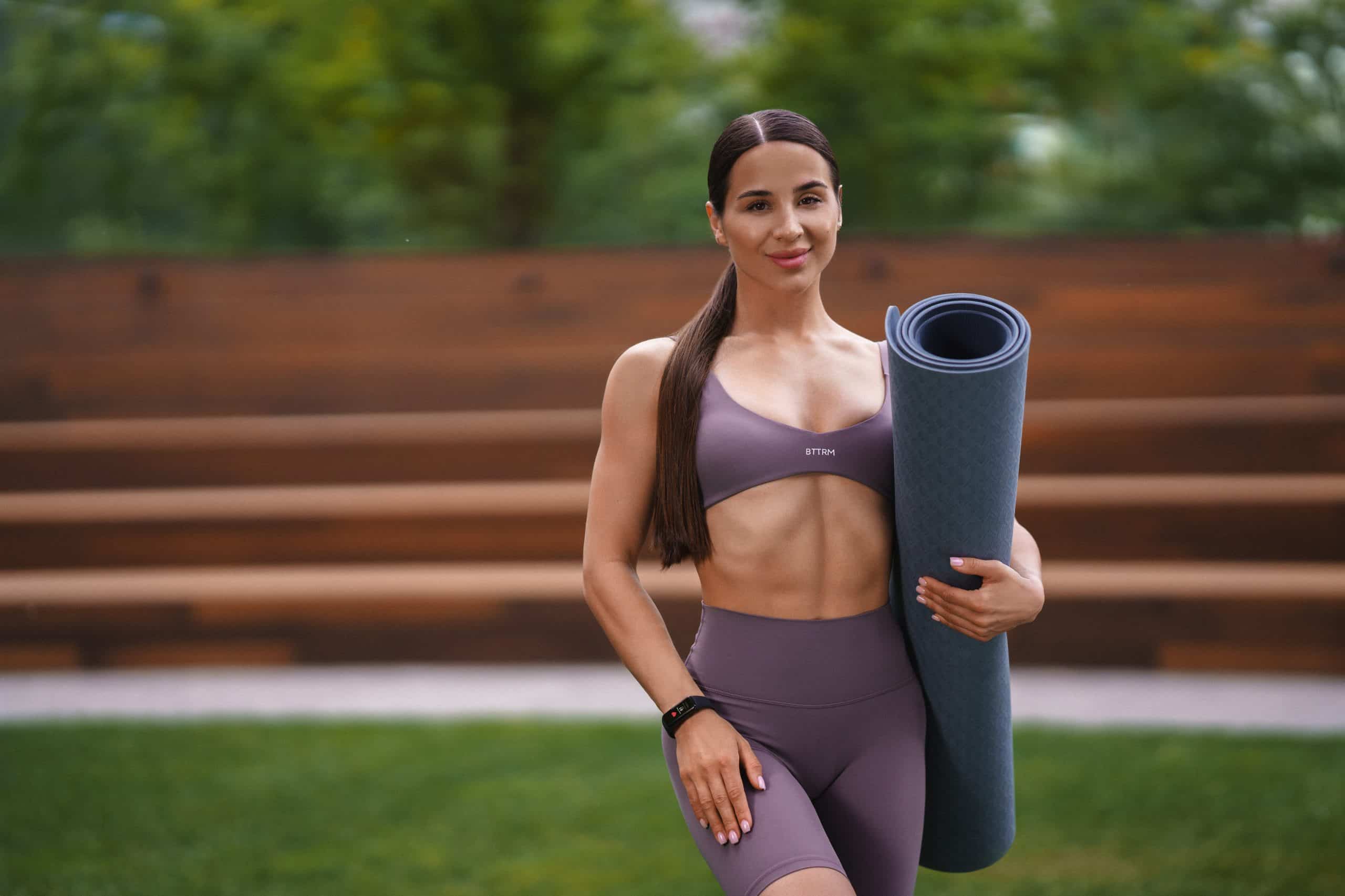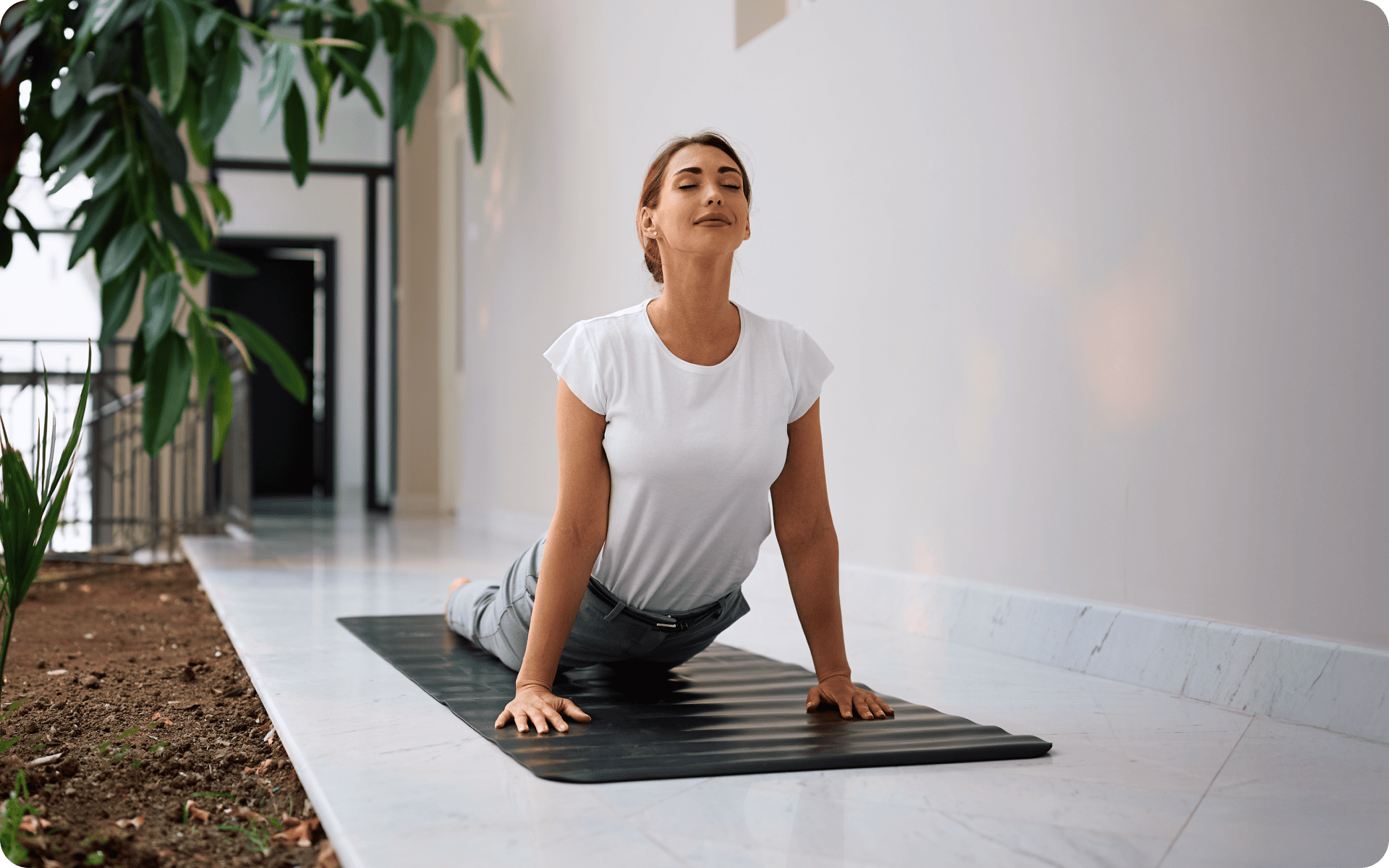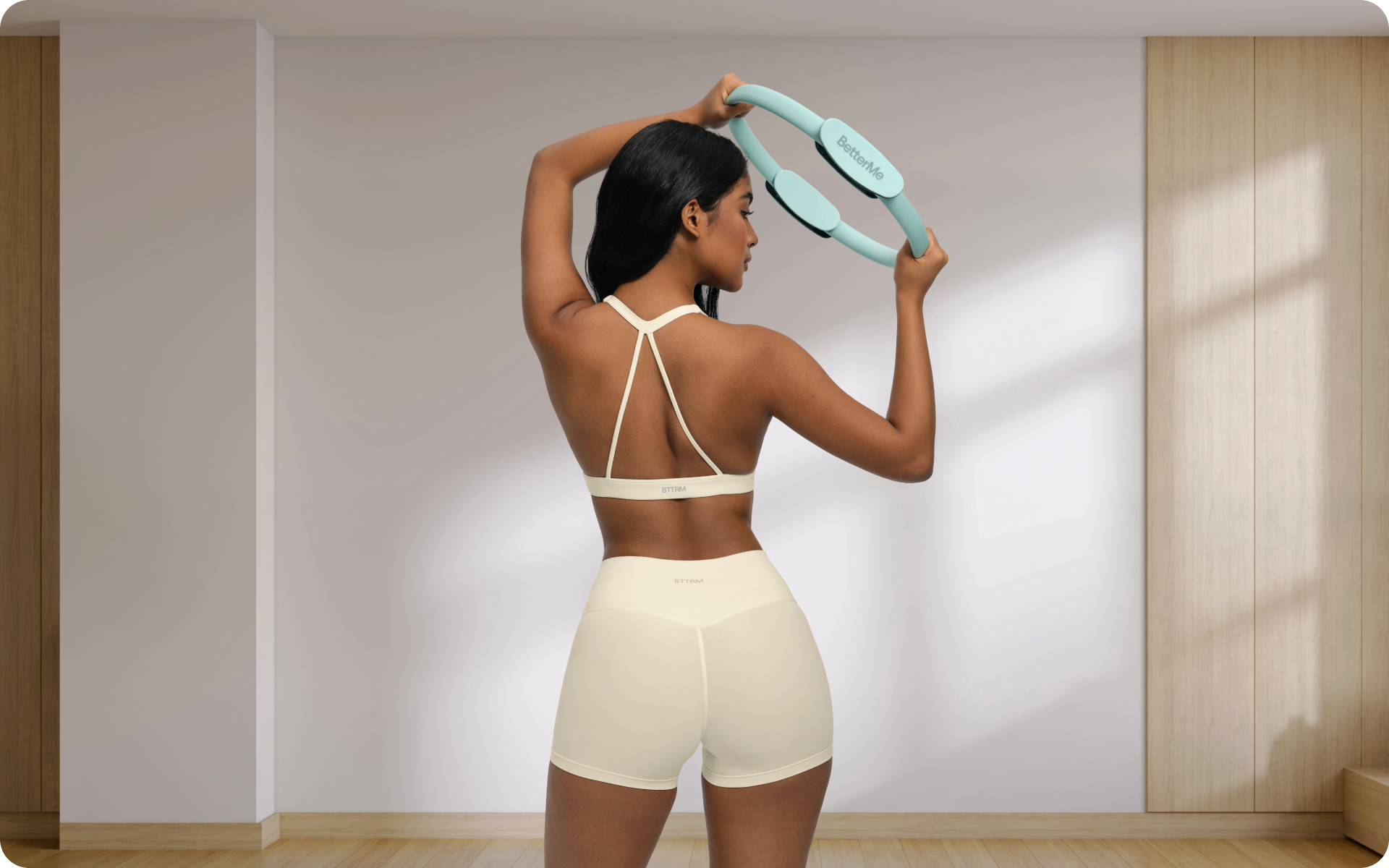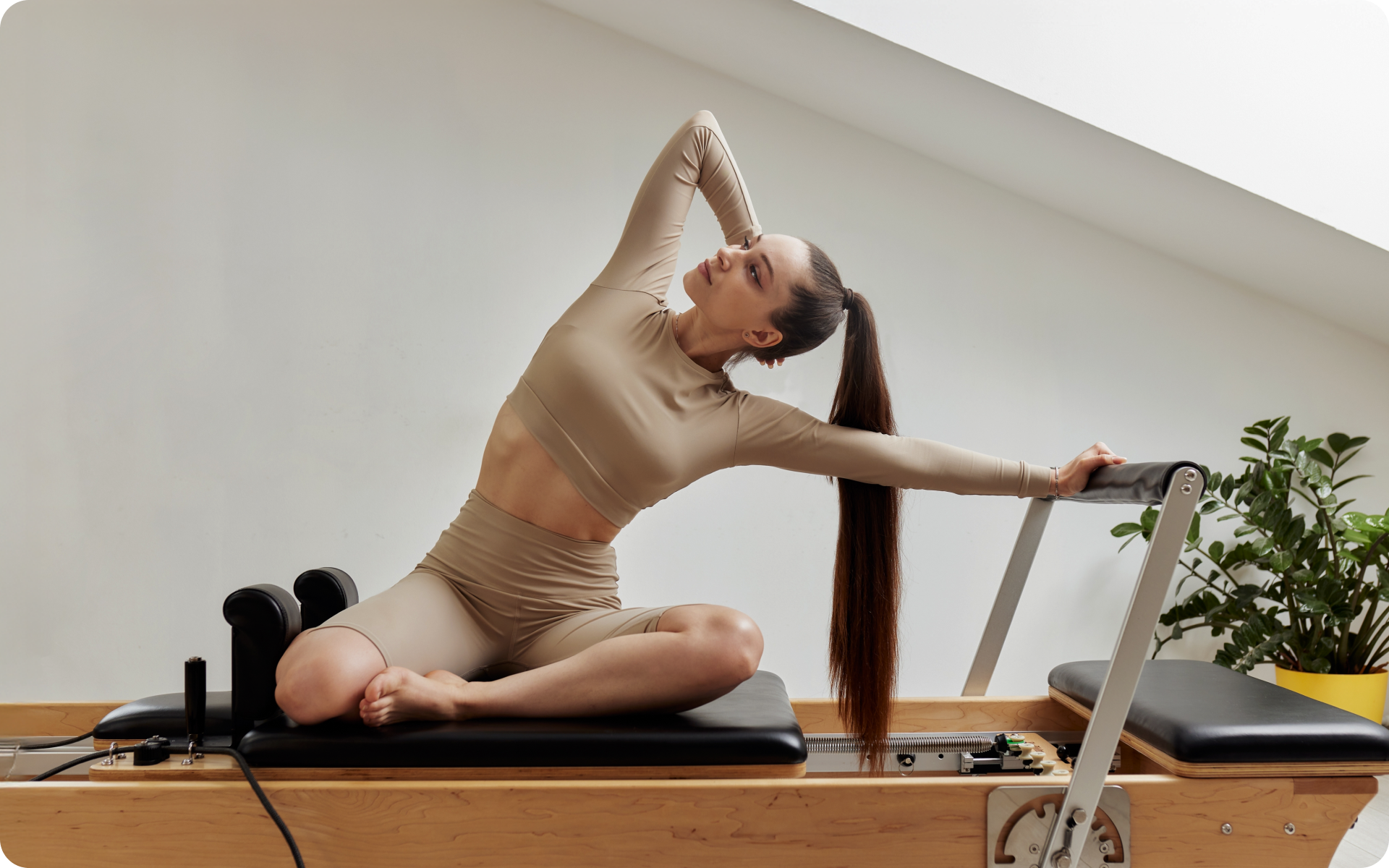Joseph Pilates was a man ahead of his time. He developed a system of exercises that emphasize the mind-body connection decades before it became popular. His ideas are at the core of what makes Pilates an effective workout for both body and mind. That said, it wasn’t until the first modern book on Pilates was published that the six principles of the practice were codified. The book titled “The Pilates Method of Physical and Mental Conditioning”, written by Philip Friedman and Gail Eisen in 1980, contained everything the two had learned from the disciples of Joseph Pilates himself (5). In it, they explain the six principles of Pilates as breath, concentration, center, control, precision and flow. Because of the manner in which they are explained, there is some debate in the Pilates community about the names and order of the principles. Nonetheless, they are all important concepts which provide a foundation for understanding and practicing Pilates. All of the classes you’ll attend will involve some, if not all, of these principles. Here’s an in-depth analysis of each one and the scientific research to back it up.
Pilates Principle 1: Breath
In Pilates, breath is used to deepen the connection between the mind and body. The goal is to achieve rhythmic breathing that is smooth and even. This means exhaling fully and inhaling deeply into the belly, rather than shallow chest breathing.
The breath is used to initiate each movement in a Pilates exercise. The exhale is generally used to engage the deep abdominal muscles and help protect the spine. Inhaling is often used to release or lengthen the body.
Benefits Of Deep Breath
Breathing deeply has numerous benefits for the body, including:
Reducing Stress And Anxiety
Research shows that deep breathing can help to lower the heart rate and blood pressure, which are both markers of stress (4).
Improving Circulation
Deep breathing helps to move oxygenated blood through the body and flush out toxins (4).
Relieving Pain
Deep breathing can help release tension in the muscles and reduce pain (3).
Improving Heart Health
Deep breathing can help strengthen the cardiovascular system and improve heart health (4).
Read More: Pilates For Posture: How It Works And The Best Exercises To Do

Pilates Principle 2: Concentration
Concentration is key in Pilates. All of your attention should be focused on the movement and the muscle group you are working. This helps to ensure that you are engaging the correct muscles and doing the exercises correctly.
For example, a Pilates move will require you to swirl your legs in the air whilst keeping your pelvis still and shoulders relaxed. In order to isolate the correct muscles and do the exercise correctly, you must create a mind-body connection and concentrate on the movement.
Concentration also helps to prevent injury as you are less likely to make mistakes if you are focusing on the movement.
Current research on mindfulness backs the benefits of concentration in Pilates. Some notable benefits of mindfulness meditation, which requires a high level of concentration, includes stress reduction, blood pressure and pain management, and improved sleep quality (2).
Pilates Principle 3: Center
The “center” refers to the deep abdominal muscles, known as the transverse abdominis (TVA). This muscle group comprises:
- The rectus abdominis, which runs down the front of the abdomen and works to flex the spine.
- The internal and external obliques, which are located on the sides of the abdomen and work to rotate and side bend the spine.
- The transverse abdominis, which is a deep layer of muscle that runs horizontally across the abdomen and works to stabilize the spine.
The TVA is sometimes referred to as the “corset muscle” because it acts like a corset, wrapping around the spine and waist to provide support.
Pilates exercises are designed to target the TVA muscles and help to strengthen and tone them. A strong TVA is important for maintaining a healthy spine and good posture (1). It also helps to flatten the stomach and give you a toned and slim waistline.
Connecting with your center (also referred to as core activation) is essential in Pilates. All of the exercises are designed to engage and strengthen the deep abdominal muscles.
A common misconception is that sucking in your stomach or bracing your abs is the same as activating your TVA. However, these are actually two different things.
Sucking in your stomach can actually make it harder to engage your TVA. And bracing your abs puts unnecessary stress on the spine. Over recruitment of the abs can also inhibit the movement of the diaphragm, which can lead to shallow breathing.
Deep breathing is essential for engaging the TVA muscles. When you inhale, the diaphragm contracts and moves downward. This action puts pressure on the stomach and forces the TVA muscles to contract, which helps to engage and strengthen them.
Whether you’re looking to simply pep up your fitness routine, jazz up your diet with mouth-watering low-calorie recipes or want to get your act together and significantly drop that number on your scale – BetterMe app has got you covered! Improve your body and revamp your life with us!
Pilates Principle 4: Control
Joseph Pilates placed a strong emphasis on control. He believed that quality was more important than quantity when it came to exercise.
Pilates exercises are designed to be performed with control. This means moving slowly and with purpose, and using your muscles to control the movement rather than momentum.
Performing exercises with control helps to ensure that you are engaging the correct muscles and doing the exercises correctly. It also helps to prevent injury as there is less chance of making mistakes if you are moving slowly and with purpose.
Years of inactivity, injury, illness, and pregnancy can make you feel that your body is out of control. Pilates can help you to regain control of your body and feel more confident in your movements.
You’ll learn efficient ways to move your body and how to use your muscles correctly. This will help you to move more easily and with less effort in your everyday life.
One important aspect of control is that it goes beyond the physical—it also refers to the mind.
In order to exercise control, you need to be able to focus your attention and be in the moment. This is where concentration comes in (refer to Pilates principle 2). Over time, your brain will learn to better control your body and the way it moves.
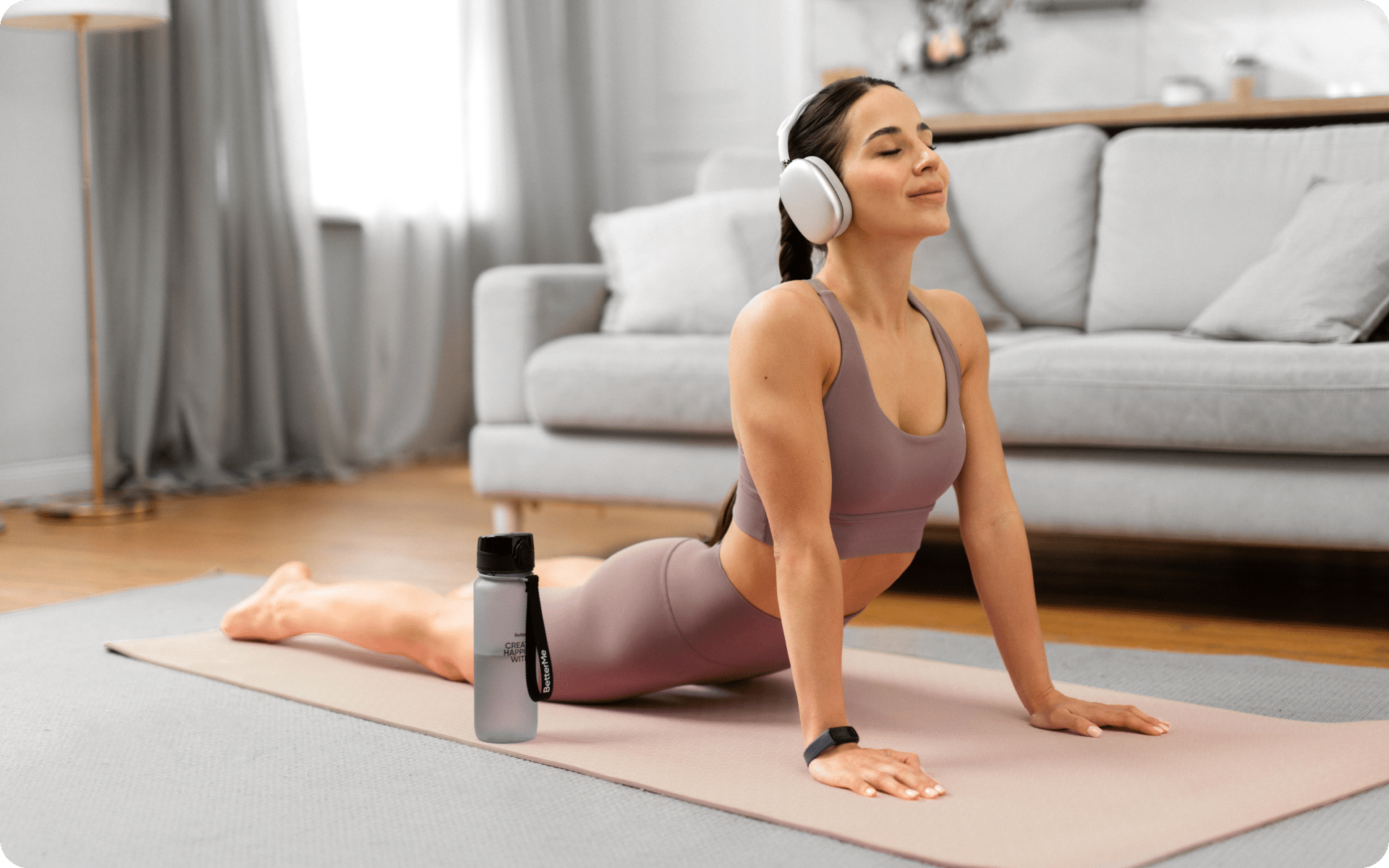
Pilates Principle 5: Precision
Precision is another key principle of Pilates. It refers to performing the exercises with accurate form and alignment.
When you first start doing Pilates, it is important to learn the correct technique for each exercise. This means paying attention to your body position and alignment, and making sure that you are moving in the right way.
As you become more familiar with the exercises, you will be able to do them with more precision. This means that you will be able to target the correct muscles and get the most out of each exercise. You’ll also be able to break bad habits and start to move more efficiently.
Read More: What Is Pilates Workout?
Pilates Principle 6: Flow
The ultimate goal of Pilates is to move with ease and fluidity. This principle is known as flow.
When you first start doing Pilates, the exercises may feel a bit awkward and uncoordinated. This is normal! It takes time to learn the correct technique and to develop the muscle memory needed to perform the exercises smoothly.
Flow is the result of practicing the exercises regularly and becoming more familiar with them.
As you start to move with more ease, you’ll find that the exercises become more enjoyable and less like work. You may even start to feel like you’re dancing rather than exercising! Given that many of Joseph Pilates’ early clients were ballet dancers, this is no coincidence.
Developing flow translates into everyday life as well. You’ll find that you move with more grace and ease, and that activities that once felt like a struggle (carrying groceries, climbing stairs, etc.) become much easier.
Frequently Asked Questions
Below are some frequently asked questions about Pilates principles.
What Is The Most Important Principle In Pilates?
While all of the Pilates principles are important, breath is considered to be the most important. Joseph Pilates stressed the importance of breath throughout the exercises, and believed that it was the key to unlocking the full benefits of Pilates.
What Are Joseph Pilates 3 Guiding Principles?
Joseph Pilates based his work on 3 guiding principles: breath, whole body health, and whole body commitment.
What this means is that he believed in the importance of using breath to control movement, and that Pilates should be used to improve overall health and well-being, not just physical fitness.
What Is The Best Description Of The Pilates Principle Of Control?
Control is the ability to move your body in a coordinated and controlled manner. This requires focus, concentration, and precision. Pilates can help you to develop better control over your body and the way it moves.
What Are The 6 Basic Principles Of Pilates?
The six principles of Pilates are: breath, concentration, center, control, precision, and flow. These principles are all necessary in order to get the most out of your Pilates practice.
What Is The Difference Between Concentration And Precision?
Concentration refers to the ability to focus your attention and be in the moment. Precision refers to performing the exercises with accurate form and alignment.
What Is The Purpose Of Pilates?
Joseph Pilates designed his system of exercises to improve overall health and well-being. Today, Pilates is often used as a way to improve physical fitness, flexibility, and strength. However, the ultimate goal of Pilates is to move with ease and fluidity (flow).
Do I Need To Have Good Balance To Do Pilates?
While balance is helpful, it is not necessary. There are many modifications that can be made to exercises to make them easier or more challenging, depending on your level of balance.
If you struggle to even flirt with the idea of giving up your favorite foods or working out till your legs give way – BetterMe app is here to breathe a fresh perspective into the way you view the weight loss process! Check out the app and experience the fun side of fitness and dieting with BetterMe!
The Bottom Line
Pilates is a system of exercises that are based on 6 principles: breath, concentration, control, precision, whole body commitment, and flow. These principles are all important in order to get the most out of your Pilates practice.
Breath is considered to be the most important principle, as it is the key to unlocking the full benefits.
DISCLAIMER:
This article is intended for general informational purposes only and does not serve to address individual circumstances. It is not a substitute for professional advice or help and should not be relied on for making any kind of decision-making. Any action taken as a direct or indirect result of the information in this article is entirely at your own risk and is your sole responsibility.
BetterMe, its content staff, and its medical advisors accept no responsibility for inaccuracies, errors, misstatements, inconsistencies, or omissions and specifically disclaim any liability, loss or risk, personal, professional or otherwise, which may be incurred as a consequence, directly or indirectly, of the use and/or application of any content.
You should always seek the advice of your physician or other qualified health provider with any questions you may have regarding a medical condition or your specific situation. Never disregard professional medical advice or delay seeking it because of BetterMe content. If you suspect or think you may have a medical emergency, call your doctor.
SOURCES:
- Core strength training for patients with chronic low back pain (2015, nih.gov)
- Mindfulness meditation: A research-proven way to reduce stress (2019, apa.gov)
- The Effect of Deep and Slow Breathing on Pain Perception, Autonomic Activity, and Mood Processing-An Experimental Study (2011, researchgate.net)
- The Effect of Diaphragmatic Breathing on Attention, Negative Affect and Stress in Healthy Adults (2017, nih.gov)
- The Pilates Methods of Physical and Mental Conditioning (1980, openlibrary.org)
